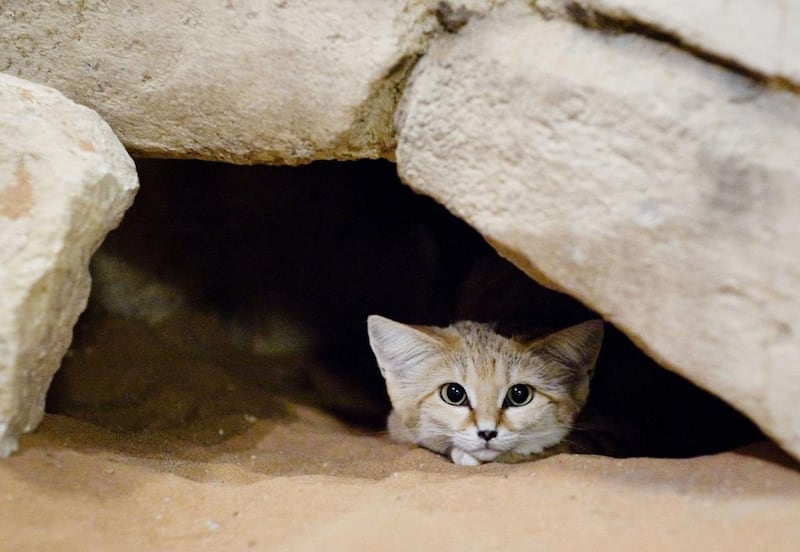The World Wildlife Fund is one of the largest international organisations working to protect wilderness and save natural animal habits. If you haven’t heard of them, you can surely recall the adorable black and white panda that has been the centrepiece of their logo since 1961. The simplicity of the logo, which originated from a panda named Chi Chi who lived in the London Zoo, has translated into worldwide recognition of the plight of endangered animals and the need to preserve their habits.
Closer to home, the UAE has an admirable record of preserving wilderness areas throughout the country, from mangroves in Abu Dhabi to wadis in the Northern Emirates. This week, these efforts might have just got their own poster animal for continued preservation efforts. For the first time in 10 years an Arabian sand cat has been spotted in a protected area in the Western Region of Abu Dhabi emirate. The reclusive feline looks similar to a tabby house cat but with more pronounced face and larger, pointy ears. To say that the animal is adorable would be an understatement.
The reappearance of the sand cat is about much more than this single species. The sighting is proof that conversation efforts in Abu Dhabi are working. When humans leave natural environments to their own devices, animals return and repopulate them.
The work of the Al Ain Zoo has been instrumental in making sure the Arabian sand cat hasn’t disappeared entirely. The animal is listed as endangered and scientists estimate that there are fewer than 250 such sand cats in Abu Dhabi emirate. The Al Ain Zoo, however, is home to the world’s largest captive population with 33 sand cats. With specialised holding and breeding facilities, the zoo is pioneering research on how to conserve these majestic little creatures.
There is still work to be done in the field of wilderness preservation. The public must continue to be made aware of the fragility of the desert environment and how our personal decisions – such as not properly disposing of rubbish – can have an enormous effect. The beautiful Arabian sand cat could very well be the poster animal for continued awareness campaigns about conversation efforts and our role in them. Given the rising popularity of cats around the world, our sand cats are the perfect face for this message of sustained conversation commitment.





